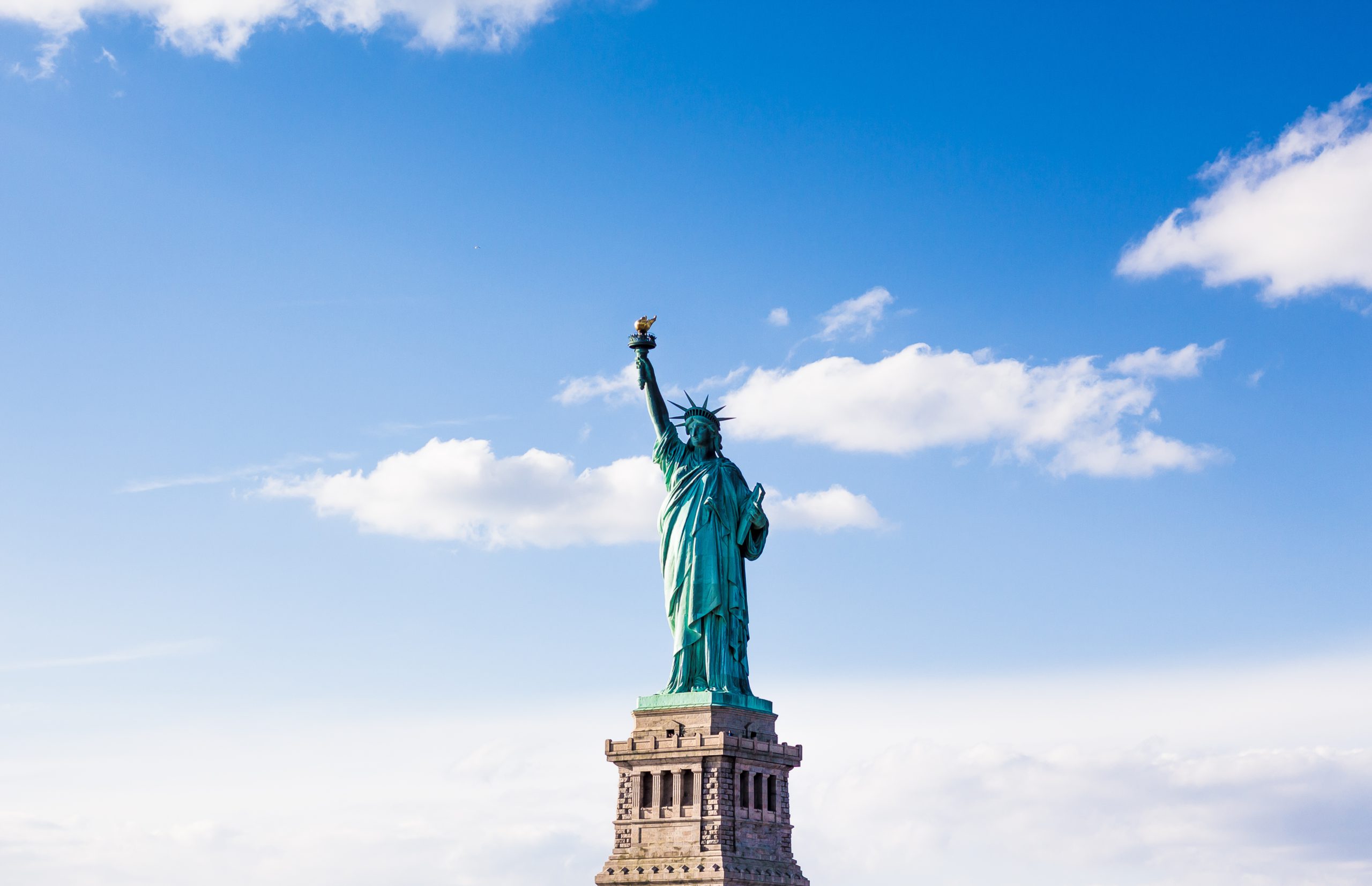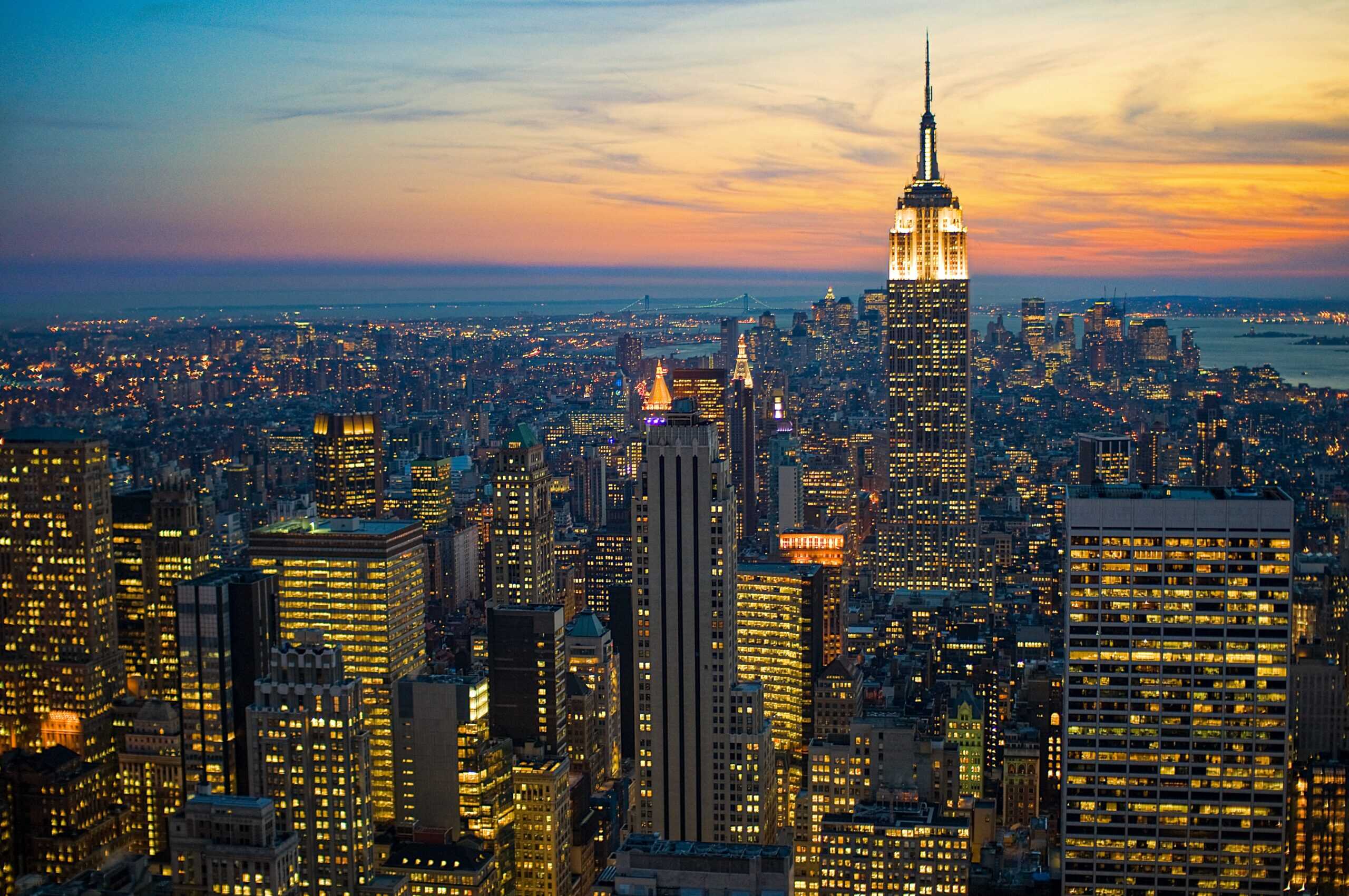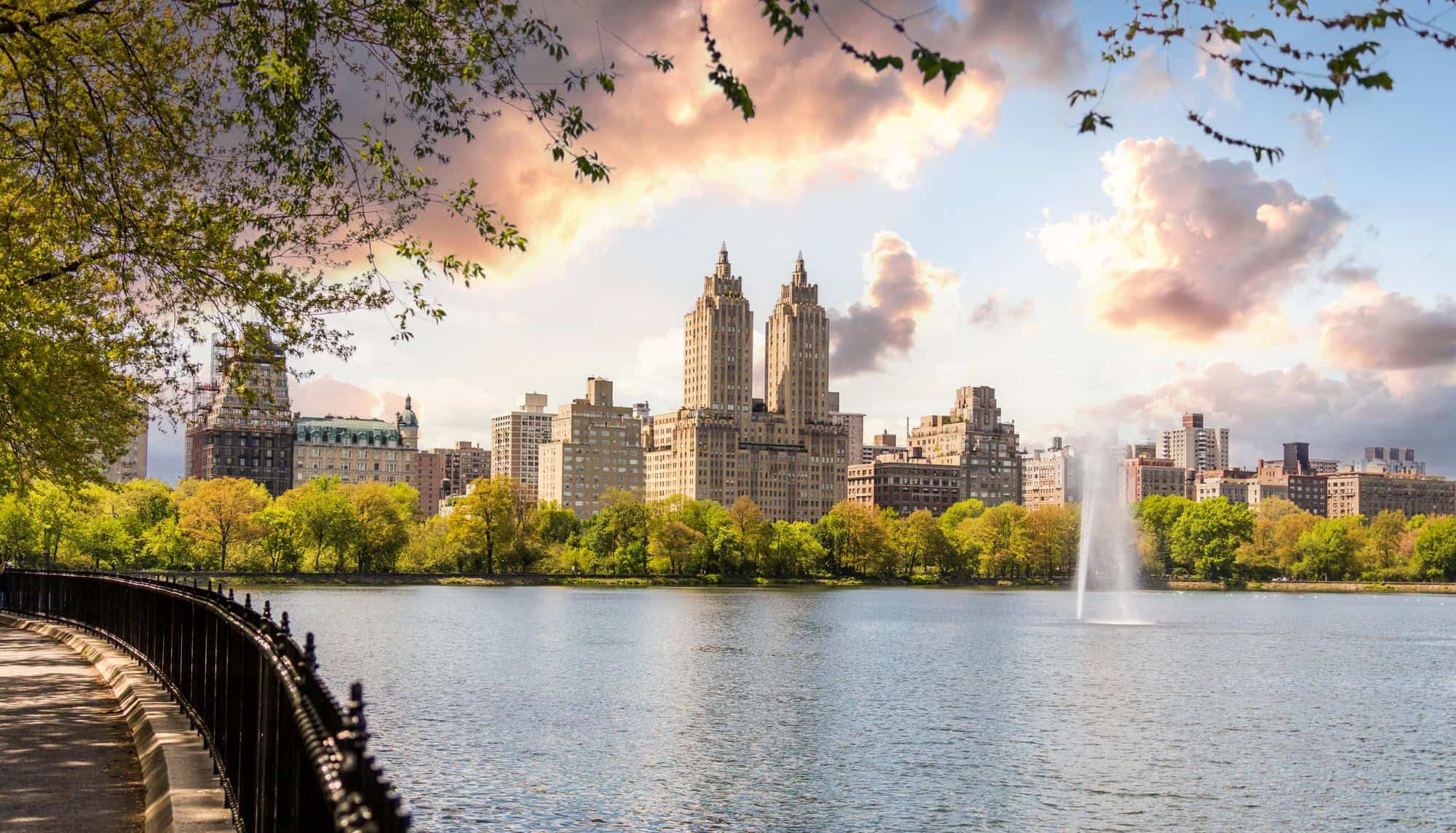With its rich history, New York City is a treasure trove of historical landmarks. More than a bustling metropolis, the city is a unique window to the historical legacy of the United States. It is the city to visit for history enthusiasts, where you can find everything from Revolutionary War sites to iconic modern monuments. There truly is something for everybody.
In this article, we explore some of the most famous and historically significant landmarks you can visit in the Big Apple, including iconic attractions such as the Statue of Liberty, Brooklyn Bridge, and much more.
1. Statue of Liberty
The Symbol of Freedom
Symbolizing the shared values of liberty and democracy between the two countries, the Statue of Liberty was a gift from France to the United States in 1886. It stands on Liberty Island—as a magnificent colossal figure—and grants visitors spectacular views of the New York harbor. If you’re looking for an even more memorable experience, you can access the pedestal or climb up to the statue’s crown for a panoramic vista of the city and beyond.
Why is the Statue of Liberty a historic landmark? As a representation of democracy and freedom, the statue was a welcoming symbol to the millions of immigrants who arrived in the United States through Ellis Island during the late 19th and early 20th centuries. Its cultural significance, as well as its iconic status, make it a revered part of American history.
2. Ellis Island
Gateway to America
From 1892 to 1954, Ellis Island was the gateway for millions of immigrants entering the United States. This island played a pivotal role in shaping the country’s cultural landscape as the nation’s busiest immigrant inspection station during the years it was active. Today, it is the home of the Ellis Island National Museum of Immigration, where you can explore the journeys and stories of those who passed through its doors.
Why is Ellis Island historically significant? The island is a historical symbol of the immigrant experience in the United States. As the entry point for more than 12 million people, it played a vital part in the country’s demographic and cultural evolution. Its legacy reflects the challenges and hopes of those seeking a new and better life in the U.S.
Learn more about immigrant journeys by visiting the exhibits at Ellis Island.
3. Federal Hall
Where the Nation Was Born
Located on Wall Street, Federal Hall has a special place in U.S. history as the site where George Washington took the oath of office to become the first president in 1789. It also served as the country’s first Capitol building, where many critical decisions were made—such as the passage of the Bill of Rights. Today, it is a National Memorial, preserving the legacy of the nation’s early government.
What happened at Federal Hall in NYC? Apart from being famous as the site where George Washington was inaugurated as the first president of the United States, Federal Hall also housed the first U.S. Congress. It can be considered the birthplace of the American government, where some of the country’s most important foundational decisions were made.
Visit Federal Hall to step into the early days of American democracy.
4. Brooklyn Bridge
A Marvel of Engineering
When it was built in 1883, the Brooklyn Bridge was the first steel-wire suspension bridge—a groundbreaking engineering feat! —connecting Manhattan to Brooklyn. The bridge spans the East River and treats visitors to spectacular views of the NYC skyline and waterfront. It is a must-see historical landmark for sightseers and history enthusiasts alike.
Why is the Brooklyn Bridge considered a historic landmark? The bridge’s innovative design at its time of construction and its fame as one of the oldest suspension bridges in the U.S. have solidified its position as a historic landmark, not to mention its role in New York City’s development, symbolizing progress and urban expansion. Its iconic status has made it a symbol of New York itself.
Take a scenic walk across the Brooklyn Bridge and enjoy its stunning architecture.
5. Empire State Building
An Icon of the Skyline
When it opened in 1931, the Empire State Building was the tallest building in the world and quickly became a symbol of New York City. With 102 stories, this skyscraper is famous for its striking Art Deco design, and to this day, it remains one of the city’s most popular attractions. The breathtaking views from its observation deck are not something you want to miss.
What makes the Empire State Building a historic landmark? Apart from its architectural significance, the Empire State Building played an essential role as a symbol of NYC’s resilience during the Great Depression. Its symbolism, iconic stature, and influence on skyscraper design have made it an enduring piece of the city’s history and skyline.
Get tickets to the Empire State Building’s observation deck for the best views of NYC.
6. Fraunces Tavern
Where History Meets Hospitality
As a meeting place for revolutionary figures—including the Sons of Liberty—Fraunces Tavern played a vital role during the American Revolution. It is most well-known for hosting George Washington’s emotional farewell speech to his officers in 1783, marking the end of the Revolutionary War. These days, the tavern is run as both a restaurant and museum, giving visitors the chance to explore its rich historical legacy and atmosphere.
What is the history of Fraunces Tavern in NYC? The tavern is steeped in revolutionary history after having served as a favorite watering hole for the Founding Fathers of the United States. It’s where George Washington bid farewell to his troops nine days after the last British soldiers left U.S. soil.
Dine at the historic Fraunces Tavern and enjoy a meal surrounded by centuries of American history.
7. 9/11 Memorial & Museum
Honoring the Fallen
The 9/11 Memorial & Museum is a somber tribute to the victims of the September 11, 2001, terrorist attacks, as well as the 1993 World Trade Center bombing. The memorial includes two reflecting pools set within the footprints of the original Twin Towers. The museum offers visitors a poignant experience through artifacts, interactive exhibits, and survivor stories that honor those affected by these tragic events.
What can you see at the 9/11 Memorial and Museum? Visitors can see artifacts from Ground Zero, such as remnants of the Twin Towers, personal items from victims, and rescue equipment. The museum also features interactive exhibits, survivor testimonies, and multimedia displays that offer insight into the events of 9/11 and the lives forever changed by it.
Pay your respects and learn about the events of 9/11 at this moving memorial.
8. African Burial Ground National Monument
A Sacred Site of Remembrance
The African Burial Ground National Monument is the final resting place of over 15,000 African Americans, both free and enslaved, dating back to the 17th and 18th centuries. This sacred site offers a profound look into African Americans’ struggles, contributions, and resilience in colonial New York, preserving a crucial chapter of the city’s history.
Why is the African Burial Ground important in NYC history? This monument’s importance is vital because it highlights African Americans’ often-overlooked role in New York City’s development. It is one of the largest and oldest burial grounds of its kind in the U.S. It serves as a reminder of the enduring impact of African Americans in shaping New York despite the oppression many faced during that era.
Discover this powerful monument and its deep cultural significance.
9. Grand Central Terminal
The Beating Heart of New York City
Grand Central Terminal, opened in 1913, is a gorgeous example of Beaux-Arts architecture, known for its grandeur and intricate design. Its most iconic feature is the celestial-themed ceiling of its main concourse—a beautiful depiction of constellations. Not just a transportation hub, you can also find shops and restaurants within the terminal, making it a vibrant destination for visitors.
Why is Grand Central Terminal a historic landmark? The terminal is historically significant because of its architectural legacy and role in shaping NYC’s transportation. It has stood as a symbol of the city’s elegance and innovation for over a century, remaining a beloved icon of New York.
Take a tour of Grand Central to explore its architecture and rich history.
Stay at The Lombardy and Explore Historic New York
New York City is a living museum with a rich tapestry of history waiting to be explored. Whether you’re interested in the nation’s birth, the immigrant experience, or the city’s modern history, NYC’s iconic landmarks offer a captivating journey through time—making your stay at The Lombardy the perfect starting point for your adventure.
With a prime location near top historical landmarks, The Lombardy promises a memorable stay in the Big Apple. Plan your trip to New York City today and immerse yourself in its historic sites.








